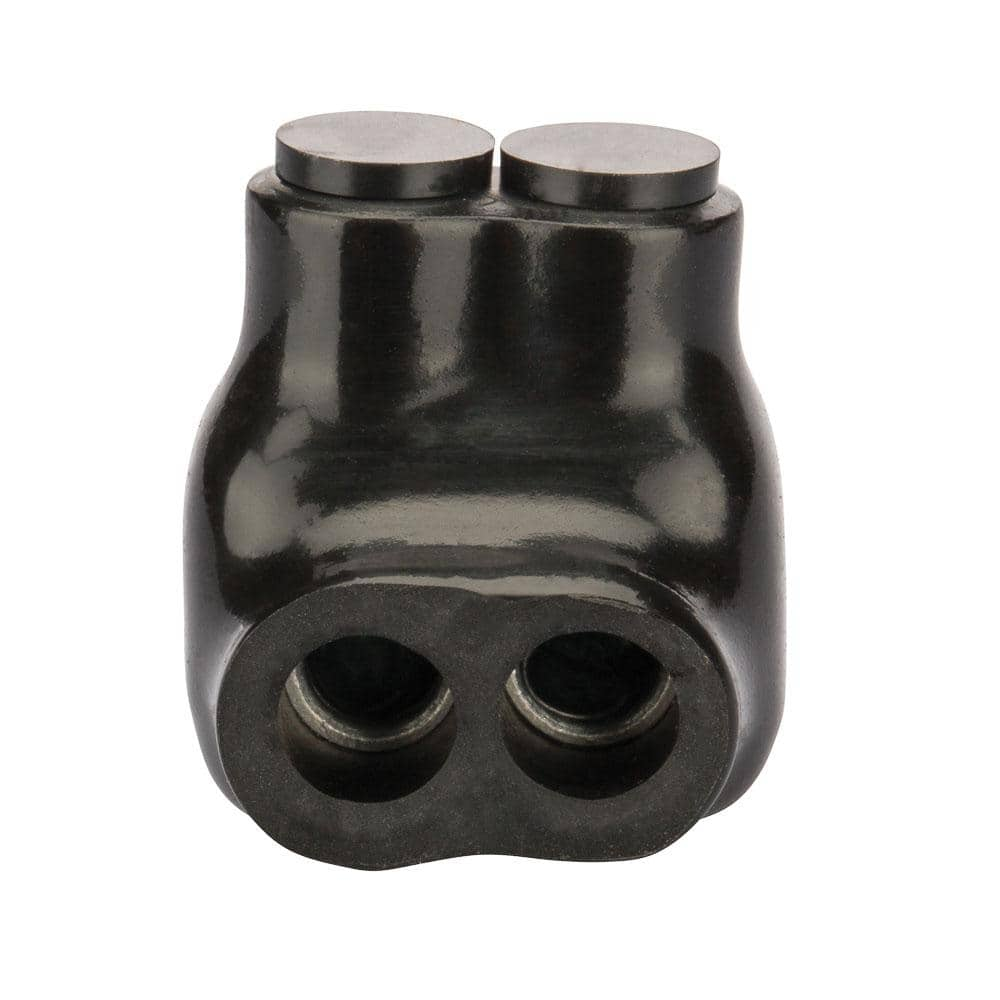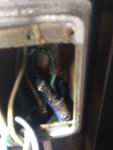You are using an out of date browser. It may not display this or other websites correctly.
You should upgrade or use an alternative browser.
You should upgrade or use an alternative browser.
Swimming pool light circuit trouble
- Thread starter mike1061
- Start date
- Status
- Not open for further replies.
Thanks again. I never thought about how that worked. In my mind that was on the secondary side. If you think about it, it should be on the primary.@mike1061,
I meant the transformer's internal protection you spoke of in an earlier post. I assumed it's on the primary winding side. Your second photo verified it is.
.
synchro
Senior Member
- Location
- Chicago, IL
- Occupation
- EE
This is just a shot in the dark, but is the wire more finely stranded than common building wire that has 19 strands? If so then normal wirenuts are not an approved connection, and perhaps they may not work as well with fine stranding.The secondary conductors look like #8 in 3/4” EMT, with insulation that is thick and feels like TW.?
I think finely stranded wire is more prone to corrosion issues outdoors because it can more easily wick up moisture, it has more surface area etc. It's also more difficult to clean off any corrosion on fine strands.
Just throwing this out there as something that might be related to the connection problems that are occuring.
I appreciate the thought but it looks like standard strands.This is just a shot in the dark, but is the wire more finely stranded than common building wire that has 19 strands? If so then normal wirenuts are not an approved connection, and perhaps they may not work as well with fine stranding.
I think finely stranded wire is more prone to corrosion issues outdoors because it can more easily wick up moisture, it has more surface area etc. It's also more difficult to clean off any corrosion on fine strands.
Just throwing this out there as something that might be related to the connection problems that are occuring.
Thanks
Metallicbeing
Member
- Location
- Visalia, CA
- Occupation
- Electrician
If your splices are burning up, then you have too much resistance at your spices (Resistance leads to heating). Wirenuts may not be an appropriate splicing method in this case. Because of the corrosive nature of the area, I would suggest one of these:

Don't forget to use some Dielectric Compound to seal out moisture.

Polaris 4-14 AWG Bagged Insulated Tap Connector, Black IT-4B - The Home Depot
Ensure a permanent connection in your boat with Polaris 4/0-Bagged Insulated Tap Connector Black
www.homedepot.com
Don't forget to use some Dielectric Compound to seal out moisture.
ptonsparky
Tom
- Occupation
- EC - retired
Ideal & Dryconn both make weather or water proof connectors. They might be a good choice if you are getting some corrosive vapors
Thanks.If your splices are burning up, then you have too much resistance at your spices (Resistance leads to heating). Wirenuts may not be an appropriate splicing method in this case. Because of the corrosive nature of the area, I would suggest one of these:

Polaris 4-14 AWG Bagged Insulated Tap Connector, Black IT-4B - The Home Depot
Ensure a permanent connection in your boat with Polaris 4/0-Bagged Insulated Tap Connector Blackwww.homedepot.com
Don't forget to use some Dielectric Compound to seal out moisture.
Thank you tooIdeal & Dryconn both make weather or water proof connectors. They might be a good choice if you are getting some corrosive vapors
- Location
- Tennessee NEC:2017
- Occupation
- Semi-Retired Electrician
If your splices are burning up, then you have too much resistance at your spices (Resistance leads to heating). Wirenuts may not be an appropriate splicing method in this case. Because of the corrosive nature of the area, I would suggest one of these:

Polaris 4-14 AWG Bagged Insulated Tap Connector, Black IT-4B - The Home Depot
Ensure a permanent connection in your boat with Polaris 4/0-Bagged Insulated Tap Connector Blackwww.homedepot.com
Don't forget to use some Dielectric Compound to seal out moisture.
The Polaris splices have dielectric compound already inside them.
- Status
- Not open for further replies.


